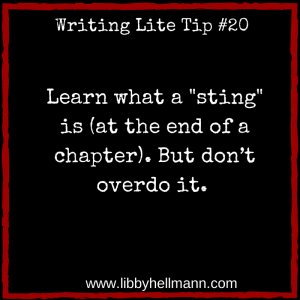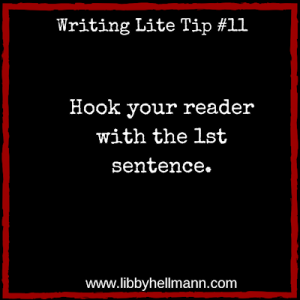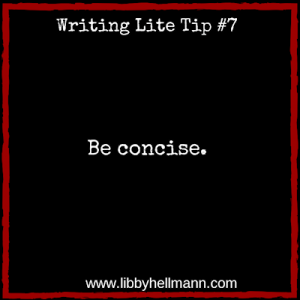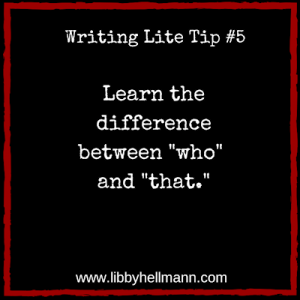Writing Lite Tip 20: Learn what a “sting” is…
A sting is a suspense technique designed to encourage readers to keep on reading, i.e., go to the next chapter. Think “cliff-hanger” and you’ve got it. But it can also introduce a character, action, or thought that makes the entire chapter that preceded it be viewed in a different light. For example, you’ve just written … Read more




